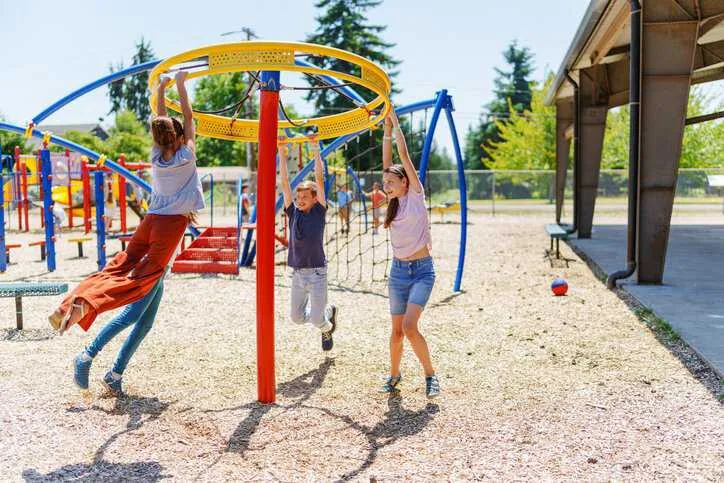ISO/TR 24666:2023—Probes for Playground Equipment Safety

Unfortunately, even with nationwide safety standards and regulations, playground accidents still happen. In fact, emergency rooms treat over 200,000 kids under the age of 14 for playground injuries each year. To minimize poorly maintained equipment, dangerous conditions, and product defects that can result in serious injuries, ISO/TR 24666:2023— Sports And Recreational Facilities – Probes For Entrapment/Entanglement On Playground Equipment – Collection Of Data summarizes information about different regional and national standards on playground safety in order to provide a reference point for different types of entrapments and probes/gauge.
What Are Common Causes of Playground Injuries?
Here are some common factors that can play a role in playground injuries:
- Poor maintenance: Significant deterioration of equipment can occur depending on the construction materials used; for example, metal components can rust, screws and bolts can become loose, ropes become frail, and wood rots. Everything from exposure to the elements to daily use by children takes a toll on the condition of equipment.
- Faulty design of playground equipment: A regular risk inherent in any playground is that children will fall. In fact, more than 70 percent of all injuries that occur on the playground involve falls, and the majority of those injuries involve children falling onto unsafe surfaces. Children may fall from the equipment or merely while running across the ground, and the presence of a soft falling surface, as with other design elements, is an important aspect of a safe playground.
- Lack of adequate supervision: At a young age, children are ignorant of their own limitations and rarely recognize risks that come with running too fast or climbing too hay, and as such, the regular supervision of children is critical in preventing playground injuries.
What Is ISO/TR 24666?
ISO/TR 24666:2023 compiles a collection of different probes/gauges for assessing common playground equipment safety performance to eliminate known safety hazards, such as entanglement and entrapment. The range of age and size users encompassed by this technical report is the 5th percentile 2-year-old to the 95th percentile 12-year-old.
The document also explains the historical content of origins, the purpose, and rationales for the dimensions and shape of each of those probes and gauges. To ensure accuracy in measuring for conformity, ISO/TR 24666:2023 details that the probes and gauges are calibrated by the manufacturer at the time of purchase and dimensions are checked for accuracy by the operator at least once every 12 months. This technical report aims to reduce serious, life-threatening and debilitating injuries to the public playground intended users.
The information in ISO/TR 24666:2023 is applicable to playground equipment manufacturers, designers, installers, assemblers, owners, operators and inspectors.
Playground Safety History
Since the 1970s, playgrounds have been built with the strictest safety precautions in mind. Before then, playgrounds were built on asphalt or other hard surfaces and most of the play equipment was made out of galvanized steel and chains. To grasp just howdangerous playgrounds used to be, a report from 1902 details that a park in Boston was responsible for “…breaking a total of seven arms belonging to six boys, besides other casualties not reported.”
In 1938, the National Recreation Association acknowledged the need for safe surface materials; by 1940, liability concerns over injuries led to the publication of documents such as “Safety versus Lawsuits” that consisted of recommendations for constructing playgrounds and to avoid lawsuits. One such recommendation suggested to test equipment to assure its safety because it would be “impossible to convince a court or jury that a playground device is safe when injuries are proven to have occurred frequently upon it.” There was not much progress on the issue, however, and asphalt and concrete surfaces remained throughout the ‘40s, ‘50s, and ‘60s.
Finally, in the 1970s and 1980s, modern-day playgrounds started to take form. Sharp edges on play equipment were rounded out, and scientific strides led to the creation of safer and softer playground surfaces like artificial turf, engineered wood fiber, and rubber mulch.
ISO/TR 24666:2023— Sports And Recreational Facilities – Probes For Entrapment/Entanglement On Playground Equipment – Collection Of Data is available on the ANSI Webstore.






